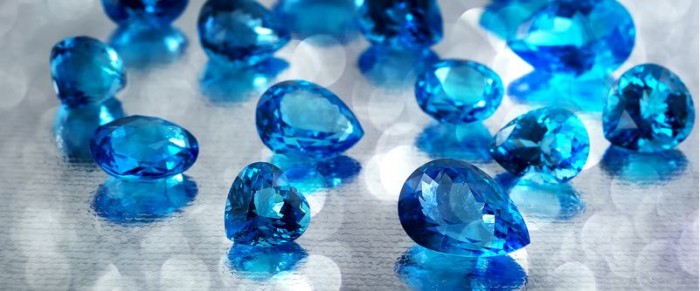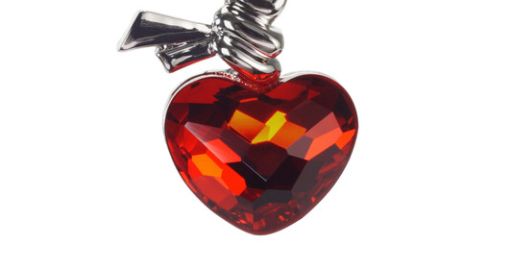How to Tell if Jewelry is Made of Real Metal and Gemstones

Whether you purchase jewelry from a store, a pawn shop, or at a real estate sale, you should be able to tell real precious metals and gemstones from the gold or silver plated metals and replicas. There are many different physical, element composition, and chemical tests to try to see if your jewelry is the real thing.
Magnet Test
Neither gold nor silver are magnetic so if you hold a piece of jewelry to a magnet and it sticks, then it is fake. However, this shouldn’t be the ultimate test to confirm that a piece is real or fake. Some counterfeited pieces are made from materials that aren’t magnetic either.
Density: Water Test
Gold is extremely dense compared to other metals and 24k can weigh about 19.3g/ml and a density test can be done on a piece of jewelry that has not gemstones attached it yet. Besides weighing the jewelry on a scale, fill a vial with water and take measurements before and after to keep track of the different water levels to observe the density.
Identify by Markings
For precious metals such as silver and gold, the most obvious thing to be aware of are any markings on the metal to identify them as real and not fake. Jewelers from the United States will include the markings, but some other countries may not. Silver metals will be marked with the word “sterling, an S, SS, the numbers 925 because sterling silver is 92.5% silver compounds. Gold metal pieces will have a stamp to indicate the level of fineness or karat. Fineness stamp will be either 1-999 or .1-.999 and karat will be 10K, 14K, 18K, 22K, or 24K.
Look for any noticeable discoloration. If any areas are worn down far enough that you can see a different colored metal below it, then most likely it has been gold or silver plated.
Physical tests with scratches or bite
There are several basic physical tests that can be performed on gold to determine if it is real or not real. One test is the bite test, but you must be very careful as to not damage the piece of jewelry, or more important, your teeth. After biting down on the jewelry with slight pressure, you should be able to see noticeable dents in the metal. Another caution tip to keep in mind is that lead is actually softer than gold and a deep indentation could mean that it is gold-plated lead and not really gold.
Another test to try that will not cause your teeth any harm is the scratch test. This can be done with an unglazed ceramic plate. Be sure to select or purchase a plate that you do not mind damaging and you might want to consider purchasing a cheap plate for this purpose instead of using one of your own from home. Place the piece of jewelry on the plate and glide it across the plate’s surface. A black streak indicates that the gold is fake and a gold streak means it’s real.
Chemical Test
As a last resort, you can perform a nitric acid test on the piece of jewelry, but this should be done by a professional jeweler. You also may risk damaging the piece of jewelry and therefore, this might not be the best option. Place your jewelry in a stainless steel container and add one drop of nitric acid to observe any reaction.
For gold jewelry, a reaction that changes the color to green means that the piece of jewelry is either made out of a base metal. If the reaction is milk-colored, then it is really sterling silver that has been gold-plated. A gold reaction means it is gold-plated brass, but if no reaction occurs at all then it is really gold.
Tell real gemstones apart from replicas
Many fake gemstones have been color treated to try to copy a natural color or they are made out of glass and plastic in molds that are larger than the actual size of the real gemstones. Fake gemstones will appear to be flawless but real gemstones are not perfect and not as smooth as a replica’s appearance.
A common type of fake gemstone is the opal. Fake opals have a perfect appearance of no gaps at all between the different colored flecks that are the same shape and size. In comparison, the flecks in real opals come in many different shapes and sizes.
Always check the gemstone description to see where it comes from and do your research beforehand to see what sources have to say about its origin. The opal comes from Australia, but many places including Russia and Hong Kong create a large amount of synthetic gemstones. If a description of a gemstone claims that it is real, but it is from a country other than its known origin, you should be very skeptical and consider it a replica.
Seek out an appraiser
If you are still unsure whether the jewelry piece is made out of real or fake gemstones and precious metals, seek a second opinion. Visit a local jewelry store or pawn shop where someone is certified in professionally appraising jewelry.
You may also like ...
- Why Do Wound Care Products And Medications Contain Silver?
- How Are Synthetic Gemstones Made And How Are They Different?
- How to Tell a Natural Pearl from a Cultured or Imitation Pearl
- Diamonds Aren't a Girl's Best Friend: Why Diamonds Are Out and Colorful Stones Are In Style
- Looking Back at All of Your Years Together: Why Traditional Gemstones Commemorate Wedding Anniversaries
- How to clean and care for ruby gemstones and jewelry














